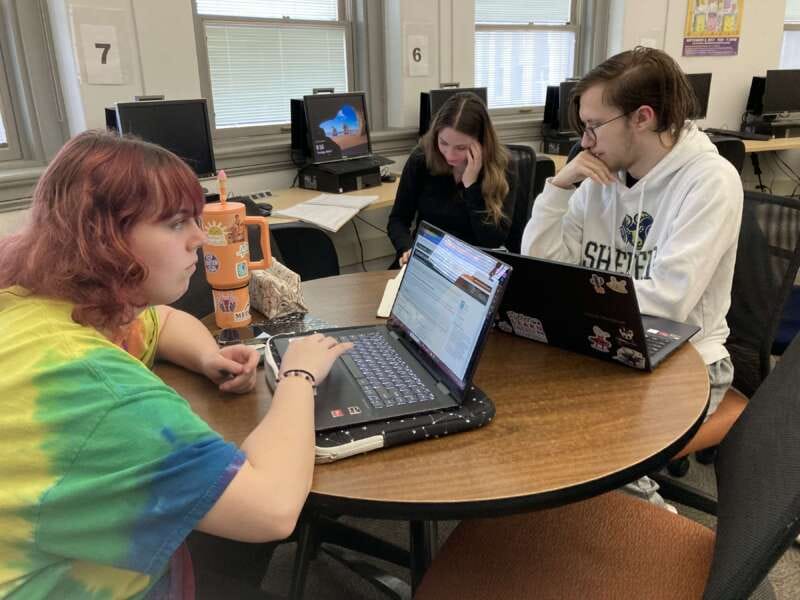ISSUED: 26 March 2024
MEDIA CONTACT: Cecelia Mason
SHEPHERDSTOWN, WV — This spring semester, students in Dr. Brian Santana’s Writing and Rhetoric II English class have been receiving hands-on experience in research methodologies and ethics by examining unsolved true crime cases. The course has provided students with a unique platform to analyze primary materials, evaluate conflicting narratives, construct arguments rooted in evidence, and navigate the moral implications of investigating real-life tragedies.
The class has stretched across concepts, dipping into media analysis when looking at news coverage, biology when looking at autopsies and conditions during events, and civics when looking into state and federal jurisdictions and the Freedom of Information Act (FOIA). Students have learned to navigate the moral and ethical complexities of researching these cases, especially when reaching out to authorities and those local to the area of the mystery. The students worked on creating a connection to these cases, humanizing the victims and their families.
 Students in the Writing and Rhetoric English II class work on solving a crime.
Students in the Writing and Rhetoric English II class work on solving a crime.
One group of students, led by Alessaudra Castro-Delcambre, English major, Hagerstown, Maryland, and including Jillian Eicher, art major, Bunker Hill, West Virginia; Easton Snapp, secondary education major, Mathias, West Virginia; and Allyson Snyder, business administration major, Fredericksburg, Virginia; investigated the 2008 disappearance of Brandon Swanson in Marshall, Minnesota, one of the longest running organized searches in American history.
“We have spoken to so many key figures in the Brandon Swanson case, including his mother who was incredibly kind enough to put us into contact with those who would be able to help in our research,” Castro-Delcambre said. “I have learned so much about how these cases have affected their lives, how searches are conducted after interviewing the lead search manager assigned to this case, and so much more.”
The choice of topic, though grisly, has inspired students to thrust themselves into the cases. Engagement and participation in class discussions have increased with such a tactile experience.
“Honestly, this class has been so eye-opening for me,” Castro-Delcambres said. “I was intimidated at first because I consider myself to be an introvert, so having to reach out to several strangers seemed impossible. I have grown so much confidence because of this.”
Castro-Delcambre encourages students to take the class, citing the importance of such an experience.
Santana is leading the class by example.
“I’ve worked in the true crime space for several years now, and I’m currently collaborating with my brother, a law enforcement officer in North Carolina, on a book that investigates the unsolved case of Virginia Marie Olson, who was a student murdered on the campus of UNC-Asheville in 1973,” Santana said.
At the beginning of class, Santana updates students on the recent findings of the Olson case. The experience he brings to the students is invaluable. Between student presentations, he discusses reasons for FOIA request denials and other people to potentially reach out to, and explains some of the complexities of agency procedures.
This course exemplifies Shepherd’s dedication to innovation and hands-on learning. Santana said the students have taken to the class very well.
“As a professor with over 17 years of teaching experience, I can confidently say that this theme has inspired a level of engagement and effort from students that surpasses any other subject I’ve taught.”
— 30 —

